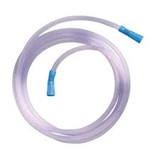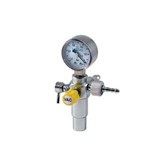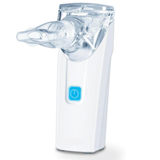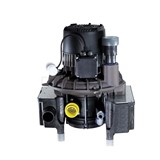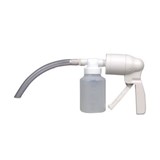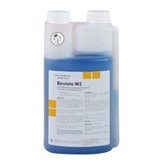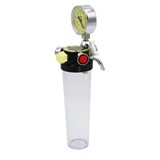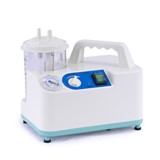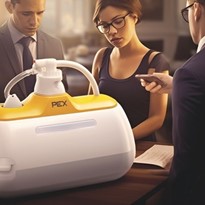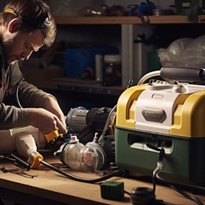In healthcare settings, where the paramount objective is to ensure the well-being of patients, infection control practices hold a position of utmost importance. The prevention and management of infections are critical facets of healthcare delivery, and any lapses in this regard can lead to adverse patient outcomes, increased healthcare costs, and regulatory non-compliance.
I. Role of Portable Suction Machines in Infection Prevention
A. Understanding the Significance of Portable Suction Machines in Healthcare
- Clearing Airways and Reducing Infection Risks: Portable suction machines, often overshadowed by more prominent medical equipment, play a pivotal role in infection control by swiftly and effectively clearing airways. These devices are designed to remove excess fluids, secretions, and potentially infectious materials from a patient's airway, reducing the risk of aspiration pneumonia and other respiratory infections.
- Versatility and Accessibility in Various Medical Scenarios: What sets portable suction machines apart is their adaptability to diverse medical scenarios. They can be seamlessly integrated into emergency medical services, clinics, hospitals, and home healthcare settings. Their mobility ensures that they are readily available when needed, regardless of the healthcare environment.
B. Benefits of Incorporating Infection Control Practices with Portable Suction Machines
- Enhancing Patient Safety and Care Quality: The primary mission of any healthcare facility is to provide the highest level of care to patients. Portable suction machines contribute significantly to this mission by ensuring that patients' airways are kept clear and free from potentially harmful substances. This not only enhances patient safety but also contributes to overall care quality.
- Reducing the Spread of Infectious Diseases: Infections can spread rapidly in healthcare settings if proper infection control measures are not in place. Portable suction machines, when used in conjunction with stringent infection control protocols, help contain the spread of infectious diseases. They minimize the chances of cross-contamination between patients by effectively managing bodily fluids.
- Compliance with Healthcare Regulations and Standards: Healthcare facilities are subject to a multitude of regulations and standards, many of which emphasize the importance of infection control. The incorporation of portable suction machines into the healthcare workflow not only aligns with these regulatory requirements but also demonstrates a commitment to maintaining the highest standards of care
II. Implementing Proper Hand Hygiene
A. The Crucial Role of Hand Hygiene in Infection Prevention
Hand hygiene stands as a cornerstone in the battle against healthcare-associated infections (HAIs). It is a fundamental practice that significantly contributes to the prevention and control of infections within healthcare settings.
- Handwashing vs. Hand Sanitizing
Within the realm of hand hygiene, two primary methods exist: handwashing and hand sanitizing. Both serve distinct purposes, but their effectiveness relies on the context in which they are applied.
- The Importance of Thorough Handwashing Techniques
When opting for handwashing, it's imperative that healthcare personnel adhere to meticulous techniques. The efficacy of handwashing hinges on factors such as duration, soap utilization, and proper hand-rubbing methods.
B. Protocols for Healthcare Personnel Regarding Hand Hygiene
Ensuring consistent hand hygiene practices among healthcare personnel is vital to mitigating infection risks. Robust protocols provide a framework for adherence to these critical practices.
- Frequency of Hand Hygiene Practices
The frequency of hand hygiene should be commensurate with the tasks performed and potential exposure to contaminants. Adhering to a structured schedule of hand hygiene minimizes the risk of pathogen transmission.
- Compliance Monitoring and Training
Establishing a culture of compliance with hand hygiene protocols necessitates ongoing monitoring and training. Healthcare facilities must provide training programs that educate staff about the importance of proper hand hygiene and the associated procedures. Regular audits and feedback mechanisms play a crucial role in reinforcing compliance.
III. Disinfecting the Machine and Accessories
A. Understanding the Components of Portable Suction Machines
To effectively implement infection control measures, it is imperative to have a comprehensive understanding of the various components that constitute portable suction machines.
B. Guidelines for Proper Disinfection
Proper disinfection procedures are paramount in maintaining a safe and sanitary healthcare environment. When it comes to portable suction machines and their accessories, adhering to established guidelines is crucial.
- Selection of Suitable Disinfectants
The choice of disinfectants should be based on their compatibility with the materials used in the portable suction machine and its accessories. Compatibility ensures effective disinfection without causing damage.
- Cleaning Procedures for Different Machine Parts and Accessories
Portable suction machines consist of multiple components, each requiring specific cleaning procedures. Proper guidance on cleaning techniques for different machine parts and accessories must be followed diligently.
C. Frequency and Documentation of Disinfection Efforts
Consistency in disinfection practices is key to infection prevention. Keeping meticulous records of disinfection schedules and efforts ensures transparency and accountability in maintaining a hygienic healthcare environment.
IV. Using Single-Use Components and Disposables
A. Advantages of Single-Use Components in Infection Control
- Eliminating the Risk of Cross-Contamination
- Simplifying Maintenance and Cleaning
- Quality and Compatibility with Portable Suction Machines
- Cost-Effectiveness and Environmental Impact
- Autoclaving
- Chemical Sterilization
- Single-use components, such as catheters and tubing, reduce the chances of contamination between patients.
- Eliminating the need for complex cleaning procedures that can sometimes fall short of ensuring complete sterilization.
- Single-use components simplify the post-use process, reducing the burden on healthcare personnel.
- Reduces the need for extensive cleaning and sterilization protocols, saving time and resources.
B. Considerations When Choosing Disposables
- Selecting disposables that are specifically designed for use with the particular model of portable suction machine in the healthcare facility.
- Ensuring that the quality and construction of disposables meet the required standards to function effectively and safely.
- Analyzing the cost-effectiveness of disposable components in the long run, factoring in maintenance costs.
- Assessing the environmental impact of disposables and exploring sustainable options when available.
V. Sterilization Techniques for Reusable Parts
A. Identifying Reusable Parts of Portable Suction Machines
- Understanding which components of portable suction machines are designed to be reused.
- Distinguishing between disposable and reusable parts to avoid inadvertent cross-contamination.
B. Methods of Sterilization
- Utilizing autoclaving as a common method for sterilizing reusable parts.
- Autoclaves use high-pressure steam to eliminate microorganisms, ensuring a high level of sterilization.
- Exploring chemical sterilization options, such as soaking reusable parts in sterilizing solutions.
- Ensuring that chemical sterilization methods are compatible with the materials of the components.
C. Establishing Sterilization Protocols and Tracking Compliance
- Developing clear and standardized protocols for sterilization procedures.
- Implementing a system to track and document the sterilization process, including dates and personnel responsible.
- Regularly auditing and reviewing compliance with sterilization protocols to maintain infection control standards.
VI. Educating Healthcare Personnel on Hygiene Protocols
A. Importance of educating healthcare staff
- Proper education is a cornerstone of infection control.
- Well-informed healthcare personnel are better equipped to prevent infections.
- Education reduces the likelihood of hygiene protocol violations.
B. Training programs and resources available
In-person training sessions
- In-person training offers hands-on learning experiences.
- Trainers can provide immediate feedback and address questions.
- Practical demonstrations enhance comprehension.
Online modules and certifications
- Online modules provide flexibility for busy healthcare professionals.
- Certification programs ensure standardized knowledge.
- Accessible 24/7, accommodating varying schedules and shifts.
C. Encouraging a culture of infection control awareness
Fostering a culture of awareness is vital.
Regular reminders and updates reinforce the importance of hygiene.
Encouraging open communication for reporting and discussing hygiene concerns.
VII. Monitoring and Auditing Infection Control Practices
A. Regular assessment of infection control practices
- Routine assessments maintain a vigilant infection control environment.
- Consistent evaluations identify areas for improvement.
- Metrics and benchmarks track compliance and effectiveness.
B. Auditing methods and tools
- Audits employ standardized checklists and procedures.
- Utilize both internal and external audits for thorough evaluation.
- Incorporate surprise audits to ensure ongoing compliance.
C. Addressing non-compliance and continuous improvement
- Non-compliance should trigger immediate corrective actions.
- Root cause analysis identifies systemic issues.
- Continuous improvement fosters a culture of excellence and adaptability.
VIII. Preventing Cross-Contamination Between Patients
A. Strategies to Prevent Cross-Contamination
- Proper Cleaning and Disinfection Routines
- Patient Isolation When Necessary
- Thorough cleaning of portable suction machine components after each use.
- Use of hospital-grade disinfectants recommended by healthcare guidelines.
- Cleaning schedules and checklists to ensure comprehensive sanitation.
- Training healthcare personnel on correct cleaning techniques.
- Identifying patients with contagious illnesses and isolating them as needed.
- Isolation precautions, including dedicated equipment, rooms, and staff.
- Adherence to isolation protocols to minimize the risk of disease transmission.
- Clear communication with patients and their families regarding isolation measures.
B. Role of Portable Suction Machines in Reducing Cross-Contamination Risks
- Portable suction machines as critical tools in infection control.
- Containment of potentially infectious materials within the machine's collection canister.
- Closed-system suctioning to prevent aerosolization of pathogens.
- Reducing the risk of healthcare personnel exposure during airway suctioning procedures.
In summary, the comprehensive adoption of infection control practices with portable suction machines not only safeguards patient health but also upholds healthcare facility compliance with regulations and standards, ensuring the highest standards of care and safety for all.




